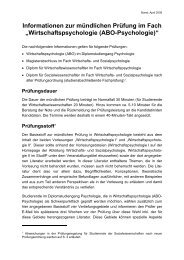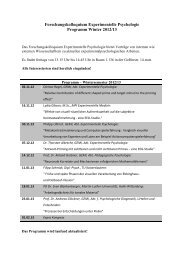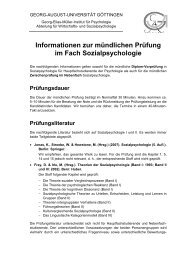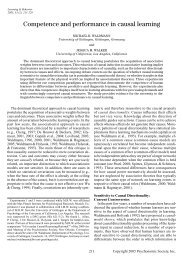Pretence as Individual and Collective Intentionality
Pretence as Individual and Collective Intentionality
Pretence as Individual and Collective Intentionality
Create successful ePaper yourself
Turn your PDF publications into a flip-book with our unique Google optimized e-Paper software.
<strong>Pretence</strong> <strong>as</strong> <strong>Individual</strong> <strong>and</strong> <strong>Collective</strong> <strong>Intentionality</strong> 50 9<br />
do not only regulate an already existing activity (such <strong>as</strong> eating), but that are<br />
constitutive of the very activity itself ( Rawls, 1955; Searle, 1969, 1995 ). Games are<br />
among the paradigms: chess, for example, is constituted by its rules that confer<br />
status on the different fi gures ( ‘ king ’ , ‘ queen ’ etc.) <strong>and</strong> their potential acts<br />
( ‘ attacking ’ , ‘ checking ’ etc.). This sub-cl<strong>as</strong>s of collective intentional phenomena<br />
with status function <strong>as</strong>signment marks the realm of institutional facts (such <strong>as</strong> ‘ This<br />
is a 5 € bill ’ , ‘ That is a c<strong>as</strong>tling ’ or ‘ They are married ’ ).<br />
Specifi c normative dimensions go along with practices <strong>as</strong>signing status function:<br />
that an object X counts <strong>as</strong> a Y in a certain context, confers normative powers on<br />
the object, licenses certain acts <strong>and</strong> generally carries normative implications such<br />
that it ought to be treated <strong>as</strong> a Y within the context. A piece of wood is a queen<br />
in the context of chess <strong>and</strong> that means it h<strong>as</strong> the power to move in certain ways,<br />
ought to be used accordingly, <strong>and</strong> ought not to be used <strong>as</strong> fi rewood in this context,<br />
for example.<br />
Early pretending — it can now be argued more precisely — is an instance, perhaps<br />
the ontogenetically primary instance, of such social activities with (proto-)<br />
institutional structure ( Rakoczy, 2006, 2007; Rakoczy <strong>and</strong> Tom<strong>as</strong>ello, 2007 ).<br />
When a child <strong>and</strong> an adult pretend together that a wooden block is an apple, for<br />
example, ‘ This wooden block counts <strong>as</strong> an “ apple ” in the context of our pretence<br />
game ’ is the corresponding status function <strong>as</strong>signment ( Walton, 1990 ). That<br />
children track <strong>and</strong> respect such fi ctional status <strong>as</strong>signments of play partners (e.g.<br />
‘ This counts <strong>as</strong> “ pouring ” now ’ ), enter into shared pretence b<strong>as</strong>ed on these<br />
stipulations ( ‘ This cup counts <strong>as</strong> “ full ” now in our pretence ’ ) <strong>and</strong> perform<br />
inferentially appropriate acts (i.e. pretend to drink), h<strong>as</strong> been shown in the studies<br />
reported above (e.g. Harris <strong>and</strong> Kavanaugh, 1993; Rakoczy et al. , 2004 ).<br />
Crucially, status function <strong>as</strong>signments hold only relative to contexts: The very same<br />
X can count <strong>as</strong> a Y in a certain context C 1 , <strong>and</strong> at the same time <strong>as</strong> a Z in another<br />
context C 2 . The very same piece of cardboard can count <strong>as</strong> a trump in one card game,<br />
but <strong>as</strong> a lousy card in another game, or the very same actor can count <strong>as</strong> hero in one<br />
play <strong>and</strong> villain in another. Young children, we found in another set of recent studies,<br />
are sensitive to such context-specifi city of fi ctional status <strong>as</strong>signments: When one <strong>and</strong><br />
the same object w<strong>as</strong> used in different pretence contexts with different people (e.g.<br />
child pretends with person A that the object is an apple, then pretends with person B<br />
that the object is a cup, then pretends with A again that it is an apple, etc.), 3-year-olds<br />
fl exibly adapted their inferential pretence acts to each given context, even switching<br />
back <strong>and</strong> forth between them ( Wyman, Rakoczy <strong>and</strong> Tom<strong>as</strong>ello, submitted ).<br />
In their own systematic <strong>and</strong> creative pretence acts, young children thus respect<br />
the normative inferential implications of joint fi ctional status <strong>as</strong>signments. So does<br />
that mean they are aware of the normative structure of such (proto-) institutional<br />
activities? Well, not necessarily. Acting in accordance with a rule does not yet<br />
amount to truly following a rule. What is needed <strong>as</strong> an indicator of the latter are<br />
more directly normative behaviours beyond acting appropriately oneself, in<br />
particular normative responses to third party inappropriate acts, such <strong>as</strong> protest,<br />
criticizing <strong>and</strong> teaching.<br />
© 2008 The Author<br />
Journal compilation © 2008 Blackwell Publishing Ltd











